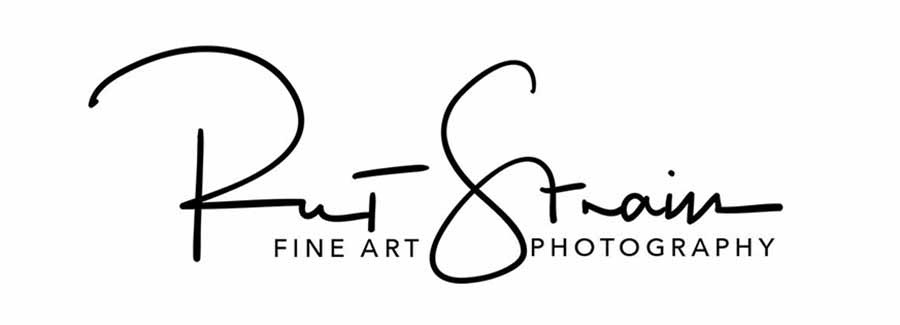In Search of Fine Art Photography

Fine art photography does not have to look like a painting. It is best in my opinion if it is clearly a photograph. But therein lies the problem for the photographer, to make a unique photograph of the natural world that supports a vision and style that captures emotion, light and form.
Photo ©Robert L StrainI love getting acquainted with local artists. Last week, the welcome was not the warmest as I stopped in a one-man gallery where the artist was finishing up a very nice landscape work. “I don’t consider photographers as artists,” he said. I am conditioned not to overreact…I’ve heard it before, had a career hearing “I hate dentists”, and parented four teenagers (not all at once, thank you God!), and have acted like food tasted great in front of experimental chefs. But the artist’s message stuck with me enough to spur me to write this article.
Most of us photographers record scenes. We may have great compositions with great light and great post processing. But does that make us an artist, much less a “fine artist”? We will start by working on a definition for an artist and fine artist. Then I will introduce you to some photographers that I believe are fine artists.
My dental career provides a good comparison to an artist’s progress. When I started out in dentistry about 50 years ago, school had taught me to be a good technical dentist. My fillings fit and my patients became healthier, but not necessarily forever. With experience I took on more challenging situations, created better patient compliance and more predictable results. But something wasn’t complete for me. I was a diagnostician, a technician. Basically, a physician of the mouth. I longed to use my creativity and artistic talents to make the most natural and beautiful results possible. This took more practice, advanced training…but more than anything I needed the vision to transfer the difficult situation to the artistic solution.
I liken this progression to just a fraction of what I have witnessed in architect friend, Narendra Patel. I am sure he came out of school having achieved excellence with all of his coursework. But there was an artistic craving in him that resulted in a release through his paintings and his architectural designs. He is a visionary fine art architect.
Fine artists must have technical talents. They must know what can work on their media and what will make them have to start over from scratch. But most of all though, they need vision. Their art does not have to appeal to me or you, but if that vision resonates with one viewer’s emotions then it is fine art even if it is not technically perfect. A pianist can render a concerto with perfect skill, but should not be considered a fine artist unless the technique and embellishments display a personal vision.
Where does that leave us photographers? First of all, there is nothing wrong with capturing a beautifully composed scene in beautiful light, even if hundreds of other photographers have that image in their portfolios. A huge print could even look wonderful as a centerpiece in your living room. They may even enhance the prints with gimmicks like huge flowers in the foreground or substituted skies. This can be beautiful and collectible photography, but it most often art rather than fine art. Oddly, photographic art may actually appeal to you more for your home than photographic fine art!
You may be sensing a restlessness within me. This article is not written to upset my great photographer friends, but to encourage me to take more of my art to the fine art level. It does discourage on from enjoying the wilderness with a goal of capturing great compositions with amazing light. It does mean searching for something more. It means more intentional pieces with a vision, but it also means wandering into works where a new vision will appear. A photographer can build on that new vision once it is conceived.
There are some good starting points to create a fine art style. These might include consistency in color (or lack of color) scheme, lens length, subject matter, lighting, and post processing techniques. If you are a connoisseur of fine art photography, explore at bit to find what appeals to you. If you are photographer, do the same!
To get you motivated, here are just a few photographers who I consider fine artists. Note that some of these photographers do photograph nudes at times so view the sites at your discretion.
Michael has a variety of storytelling styles, utilizing lighting and lack of focus to make us a bit uncomfortable with what is happening in our world.
Mikael Owunna conveys the limitless opportunities for African Americans through photography that might be considered multimedia photography. Look beyond the decorated bodies for the messages he uniquely presents through his vision.
Most of Art Wolfe’s photographic life was as a documentarian. He had scores of images printed in National Geographic and had a plethora of published books. His knowledge of the art of aboriginal peoples gave him the vision to create a truly visionary work, particularly with the patterns seen in his Migrations and Human Canvas series.
Kim Weston has a variety of styles, but is primarily known for nudes within the environment and reinterpreting renaissance masterpieces through photography.
A fine art photographer may have one or more styles. Andy Lee’s infrared monochromatic images are easily identified with his vision.
Visit 1X.com and scroll down to see some samples of popular fine art images. You may click on the photographer’s name alongside any image to see more of that photographer’s work.
